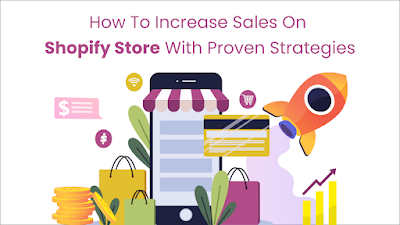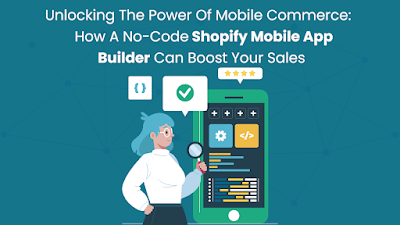Are you a Shopify store owner looking to boost your sales and generate more revenue? Look no further! In this article, we will share proven strategies that can help you increase your sales and take your online business to the next level. Whether you are just starting or have an established store, these tactics will provide you with actionable insights to drive more traffic, convert visitors into customers, and increase your revenue.
Understanding Your Target Audience
Before implementing any sales strategies, it's crucial to understand your target audience. Take the time to research and gather data on your customers' demographics, preferences, and buying behavior. This information will help you tailor your marketing efforts to reach and engage your potential customers effectively.
By analyzing the data, you can gain valuable insights into your customers' interests, the devices they use, and their browsing patterns. This information will enable you to create targeted campaigns that resonate with your audience and drive higher conversion rates.
Additionally, conducting surveys or interviews with your existing customers can provide you with valuable feedback and help you understand their pain points and motivations. Use this information to refine your marketing messages and product offerings to meet their needs better.
Optimizing Your Shopify Store for Conversions
Creating a visually appealing and user-friendly website is essential to increase sales on your Shopify store. Here are some key areas to focus on when optimizing your store for conversions:
Utilizing high-quality product images and videos
Visual content is crucial when it comes to online shopping. Invest in high-quality product images that showcase your products from various angles and provide zoom functionality. It will give your customers a clear view of what they are purchasing and instill confidence in their buying decisions.
Consider incorporating product videos as well. Videos allow you to demonstrate how your products work, showcase their features, and engage your audience more dynamically.
Implementing effective pricing strategies
Consider implementing pricing strategies such as discounts, limited-time offers, or bundle deals to create a sense of urgency and entice customers to buy. Experiment with different pricing strategies and monitor the impact on your sales to find the most effective approach for your products.
By optimizing these critical elements of your Shopify store, you can create a compelling online shopping experience that encourages visitors to become paying customers. But optimizing your store is just the beginning. To indeed increase sales, you need to generate traffic and engage with your audience effectively.
Building a solid social media presence
Set up and manage active social media accounts for your Shopify store. Consistently post engaging content that showcases your products, provides valuable information, and encourages interaction with your audience. Use relevant hashtags and interact with your followers by responding to comments and messages promptly. By partnering with influencers, you can leverage their influence and credibility to promote your products and generate sales.
Running social media ads
Paid social media advertising can be a highly effective way to reach your target audience and drive sales. Platforms like Facebook and Instagram offer robust targeting options that allow you to narrow down your audience based on demographics, interests, and behaviors.
Create visually appealing ads that highlight your product's unique selling points and entice viewers to click through to your Shopify store. Use compelling copy and strong calls to action to drive conversions.
Email marketing
Email marketing remains one of the most successful strategies to increase revenue and customer loyalty. By creating an email subscriber list, you can regularly communicate with your audience and keep them informed about new products, promotions, and exclusive discounts. By utilizing social media and email marketing effectively, you can build a solid online presence, engage with your audience, and drive sales on your Shopify store. Implementing upselling and cross-selling techniques can further boost your revenue.
Effective Strategies to Increase Sales in Your Shopify Store
Optimizing Your Shopify Store for Mobile
With the majority of online traffic coming from mobile devices, it is crucial to ensure that your Shopify store is optimized for mobile. It means having a responsive design that adapts to different screen sizes and loads quickly on mobile devices. Additionally, consider using the Shopify mobile app builder to create a custom mobile app for your store.
Leveraging Social Proof and Reviews
One of the most effective strategies to boost sales on your Shopify store is utilizing social proof and customer reviews. Displaying testimonials, ratings, and reviews from satisfied customers can help build trust and credibility with potential buyers. You can also offer incentives such as discounts or rewards for customers who leave reviews, further incentivizing them to share their feedback.
Implementing Email Marketing Campaigns
Email marketing remains one of the most effective tools for driving sales and engaging customers. Use your Shopify store to collect email addresses from customers and create segmented email lists based on their preferences and purchase history. Send personalized marketing campaigns with targeted offers, promotions, and product recommendations to entice customers to make a purchase.
Providing Excellent Customer Service
Lastly, providing excellent customer service is critical to increasing sales and building a loyal customer base. Make sure to respond promptly to customer inquiries and resolve any issues or concerns in a timely and professional manner. By prioritizing customer satisfaction and building strong relationships with your customers, you can increase loyalty and drive repeat business.
Monitoring and Analyzing Sales Data to Make Informed Decisions
It's crucial to monitor and analyze your sales data regularly to ensure the success of your sales strategies.
Conversion rate
Monitor your conversion rate to understand how many visitors are turning into customers. This metric will help you identify any areas of your sales funnel that may need improvement.
Average order value
Track your average order value to determine if your upselling and cross-selling efforts are effective. If the average order value is low, consider adjusting your strategies or introducing new products or bundles to increase the value per order.
Customer acquisition cost
Calculate your customer acquisition cost to understand how much you are spending to acquire each new customer. This metric will help you evaluate the effectiveness of your marketing campaigns and adjust your budget accordingly.
Customer retention rate
Monitor your customer retention rate to measure the loyalty of your existing customers. A high retention rate indicates that your customers are satisfied and likely to make repeat purchases.
Conclusion
Increasing sales on your Shopify store requires a combination of practical strategies and continuous optimization. By understanding your target audience, optimizing your store for conversions, leveraging social media and email marketing, implementing upselling and cross-selling techniques, and monitoring your sales data, you can drive more traffic, convert visitors into customers, and ultimately boost your revenue.
Remember, increasing sales is an ongoing process. Stay updated with the latest trends, experiment with new strategies, and always prioritize providing exceptional customer experiences.





